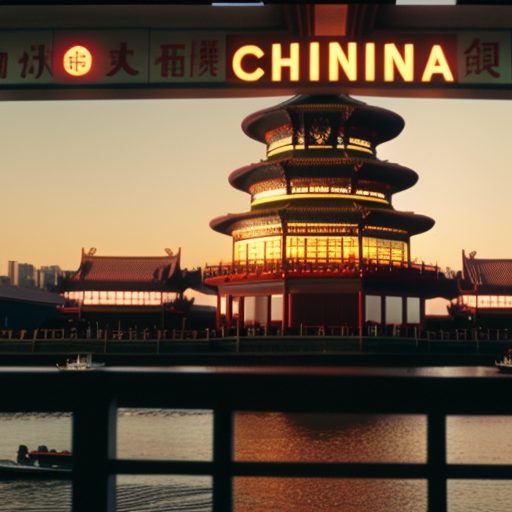Will China ever get rich? A new era of much slower growth dawns
Will China ever get rich? A new era of much slower growth dawns Reuters


Will China ever get rich? A new era of much slower growth dawns
BEIJING, July 18 (Reuters) – China is entering an era of much slower economic growth, raising a daunting prospect: it may never get rich.
Whether the world’s second-largest economy chugs ahead at 3-4% annually or flirts, as some economists expect, with Japan-like “lost decades” of stagnation, it looks set to disappoint its leaders, its youth, and much of the world.
China’s Development Gap and Global Impact
- Policymakers hoped to narrow China’s development gap with the United States.
- Young Chinese went to universities to study for advanced-economy jobs.
- Africa and Latin America count on China buying their commodities.
“It is unlikely that the Chinese economy will surpass that of the United States within the next decade or two,” said Desmond Lachman, a senior fellow at the American Enterprise Institute.
He expects growth to slow to 3%, which “will feel like an economic recession” when youth unemployment is already above 20%. “This is not good for the rest of the world economy” either, he added.
When Japan began to stagnate in the 1990s, it had already exceeded the average GDP per capita of high-income economies and was nearing U.S. levels. China, however, is only just above the middle-income point.
China’s Current Economic Situation

Second-quarter growth of 6.3% underwhelmed, considering the low base caused by last year’s COVID-19 lockdowns, raising pressure on Chinese leaders who are expected to meet this month to discuss a short-term boost and longer-term fixes. The April-June data puts 2023 growth on track for roughly 5%, with slower rates thereafter.
But China’s annual growth averaged around 7% last decade, and more than 10% in the 2000s.
Structural Weaknesses and Reform Plans
- Poor household consumption and private-sector investment are blamed on structural issues rather than the pandemic.
- Structural issues include a burst property sector bubble, imbalances between investment and consumption, local government debt, and the Communist Party’s control over society.
- China’s workforce and consumer base are shrinking while the cohort of retirees is expanding.
“The demographic problem, hard landing of the property sector, heavy local government debt burden, pessimism of the private sector as well as China-U.S. tensions do not allow us to hold an optimistic view towards mid- to long-term growth,” said Wang Jun, chief economist at Huatai Asset Management.
Potential Solutions
NDRC head Zheng Shanjie, in a July 4 article in the official “Qiushi” magazine, made a rare reference to the middle-income trap, saying China needed to “accelerate the construction of a modern industrial system” to avoid it.
Economists cite China’s electric vehicle boom as evidence of progress, but much of its industrial complex is not upgrading at the same speed. Overseas car sales account for only 1.7% of exports.
Policymakers have said they want household consumption to drive growth, without hint
SDGs, Targets, and Indicators
| SDGs | Targets | Indicators |
|---|---|---|
| SDG 1: No Poverty | 1.1 By 2030, eradicate extreme poverty for all people everywhere, currently measured as people living on less than $1.25 a day | No specific indicators mentioned |
| SDG 8: Decent Work and Economic Growth | 8.1 Sustain per capita economic growth in accordance with national circumstances and, in particular, at least 7 per cent gross domestic product growth per annum in the least developed countries | No specific indicators mentioned |
| SDG 10: Reduced Inequalities | 10.1 By 2030, progressively achieve and sustain income growth of the bottom 40 per cent of the population at a rate higher than the national average | No specific indicators mentioned |
| SDG 11: Sustainable Cities and Communities | 11.3 By 2030, enhance inclusive and sustainable urbanization and capacity for participatory, integrated and sustainable human settlement planning and management in all countries | No specific indicators mentioned |
| SDG 12: Responsible Consumption and Production | 12.2 By 2030, achieve the sustainable management and efficient use of natural resources | No specific indicators mentioned |
| SDG 13: Climate Action | 13.1 Strengthen resilience and adaptive capacity to climate-related hazards and natural disasters in all countries | No specific indicators mentioned |
| SDG 16: Peace, Justice, and Strong Institutions | 16.6 Develop effective, accountable and transparent institutions at all levels | No specific indicators mentioned |
1. Which SDGs are addressed or connected to the issues highlighted in the article?
- SDG 1: No Poverty
- SDG 8: Decent Work and Economic Growth
- SDG 10: Reduced Inequalities
- SDG 11: Sustainable Cities and Communities
- SDG 12: Responsible Consumption and Production
- SDG 13: Climate Action
- SDG 16: Peace, Justice, and Strong Institutions
2. What specific targets under those SDGs can be identified based on the article’s content?
- Target 1.1: Eradicate extreme poverty for all people everywhere, currently measured as people living on less than $1.25 a day
- Target 8.1: Sustain per capita economic growth in accordance with national circumstances and, in particular, at least 7 per cent gross domestic product growth per annum in the least developed countries
- Target 10.1: By 2030, progressively achieve and sustain income growth of the bottom 40 per cent of the population at a rate higher than the national average
- Target 11.3: By 2030, enhance inclusive and sustainable urbanization and capacity for participatory, integrated and sustainable human settlement planning and management in all countries
- Target 12.2: By 2030, achieve the sustainable management and efficient use of natural resources
- Target 13.1: Strengthen resilience and adaptive capacity to climate-related hazards and natural disasters in all countries
- Target 16.6: Develop effective, accountable and transparent institutions at all levels
3. Are there any indicators mentioned or implied in the article that can be used to measure progress towards the identified targets?
No specific indicators are mentioned or implied in the article that can be used to measure progress towards the identified targets.
4. Table: SDGs, Targets, and Indicators
| SDGs | Targets | Indicators |
|---|---|---|
| SDG 1: No Poverty | 1.1 Eradicate extreme poverty for all people everywhere, currently measured as people living on less than $1.25 a day | No specific indicators mentioned |
| SDG 8: Decent Work and Economic Growth | 8.1 Sustain per capita economic growth in accordance with national circumstances and, in particular, at least 7 per cent gross domestic product growth per annum in the least developed countries | No specific indicators mentioned |
| SDG 10: Reduced Inequalities | 10.1 By 2030, progressively achieve and sustain income growth of the bottom 40 per cent of the population at a rate higher than the national average | No specific indicators mentioned |
| SDG 11: Sustainable Cities and Communities | 11.3 By 2030, enhance inclusive and sustainable urbanization and capacity for participatory, integrated and sustainable human settlement planning and management in all countries | No specific indicators mentioned |
| SDG 12: Responsible Consumption and Production | 12.2 By 2030, achieve the sustainable management and efficient use of natural resources | No specific indicators mentioned |
| SDG 13: Climate Action | 13.1 Strengthen resilience and adaptive capacity to climate-related hazards and natural disasters in all countries | No specific indicators mentioned |
| SDG 16: Peace, Justice, and Strong Institutions | 16.6 Develop effective, accountable and transparent institutions at all levels | No specific
Behold! This splendid article springs forth from the wellspring of knowledge, shaped by a wondrous proprietary AI technology that delved into a vast ocean of data, illuminating the path towards the Sustainable Development Goals. Remember that all rights are reserved by SDG Investors LLC, empowering us to champion progress together. Source: reuters.com
Join us, as fellow seekers of change, on a transformative journey at https://sdgtalks.ai/welcome, where you can become a member and actively contribute to shaping a brighter future.
|








